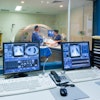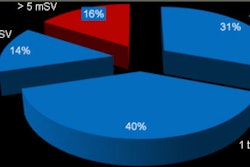Tuesday, November 29 | 3:30 p.m.-3:40 p.m. | SSJ04-04 | Room S503AB
A review of research from 2004 to 2010 has found that cardiac MRI studies routinely use higher gadolinium doses than recommended by the U.S. Food and Drug Administration (FDA) and clinical trials should be conducted to determine the appropriate doses of gadolinium enhancement of the myocardium.Dr. Marcelo Nacif, PhD, a postdoctoral visiting fellow of radiology and imaging science at the U.S. National Institutes of Health, led the study, which reviewed publications from January 2004 through December 2010.
The researchers identified a total of 399 publications, with 233 studies matching their inclusion criteria. The studies included 19,934 patients with a mean age of 54.2, ranging from 9.3 to 76 years. There were 34 trials related to perfusion testing and 199 trials for myocardial-delayed enhancement.
In 2004, the weighted-median and weighted-mean reported contrast dose were 0.15 and 0.16 (+ 0.06) mmol/kg, respectively. Gadopentetate dimeglumine (Magnevist, Bayer HealthCare Pharmaceuticals) was the most frequent gadolinium type.
Median contrast dose for the years 2005 to 2010 was consistently 0.2 mmol/kg for each year. Mean contrast dose for 2005 was 0.19 (+ 0.03) and for 2006 through 2010 was approximately 0.18.
In 2007, the FDA issued a black box warning for gadolinium-based contrast agents, recommending that the label dose of 0.1 mmol/kg or less not be exceeded.
"With the advent of cautions for nephrogenic systemic fibrosis (NSF), most applications of gadolinium-enhanced MRI have focused on reduction of contrast dose," Nacif said. "In comparison, the contrast dose of gadolinium for cardiac imaging is relatively high -- about double label recommendations. Our results indicate that efforts need to be made to specifically study the appropriate dose of gadolinium contrast for myocardial imaging."
Additional research in this area is most likely to come from industry-sponsored dose studies or in conjunction with recommendations from specialty cardiac or MRI societies, Nacif said.


.fFmgij6Hin.png?auto=compress%2Cformat&fit=crop&h=100&q=70&w=100)





.fFmgij6Hin.png?auto=compress%2Cformat&fit=crop&h=167&q=70&w=250)











